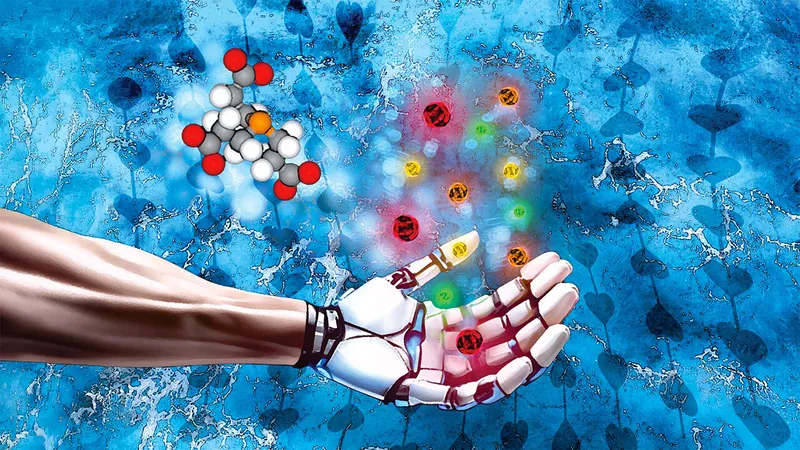
Revolutionizing Quantum Dots Production: A Sustainable Breakthrough
2025-04-11
Author: Sarah
A New Era for Quantum Dots
With the escalating demand for cutting-edge materials to tackle modern technology and environmental challenges, the spotlight is increasingly shining on nanomaterials—especially quantum dots. A recent groundbreaking study by researchers from ULiège unveils a sustainable method for manufacturing these remarkable nanostructures.
What Are Quantum Dots?
Quantum dots (QDs) are tiny semiconductor particles that possess extraordinary optical and electronic characteristics. Their remarkable ability to precisely absorb and emit light makes them invaluable for applications in solar cells, LEDs, medical imaging, and advanced sensors.
Pioneering Sustainable Production
In an innovative breakthrough, ULiège researchers have introduced the first scalable process to produce cadmium chalcogenide quantum dots using an all-aqueous environment. By employing a novel biocompatible source of chalcogenide (elements like sulfur, selenium, and tellurium), they have diverged sharply from the traditional organic solvent methods.
A Multi-Laboratory Collaboration
This achievement is the result of a synergistic collaboration between two ULiège laboratories—the CiTOS (Center for Integrated Technology and Organic Synthesis) and MSLab. By innovating a water-soluble chalcogenide source and an efficient flow system, they've successfully produced high-quality, biocompatible quantum dots. Their findings are prominently featured in the journal "Chemical Science" alongside a comprehensive review in "Materials Science and Engineering R" on sustainable quantum dot production.
Innovative Techniques and Real-Time Monitoring
"The inspiration stemmed from peptide synthesis, where TCEP acts as a well-known water-soluble reductant," explains Jean-Christophe Monbaliu, CiTOS Director. "We identified an opportunity to use it as a safe chalcogen transfer agent—and the results exceeded our expectations." In a rare approach for this field, the team utilized in situ Raman spectroscopy to monitor the reaction pathways in real-time, showcasing their commitment to innovative research methods.
Towards a Greener Future
The developed system not only amplifies productivity but also significantly cuts down on waste, energy, and the necessity for extensive post-processing. "While cadmium-based quantum dots boast remarkable efficiency, their toxicity raises concerns, especially with increasingly stringent environmental regulations," notes Carlotta Campalani, a researcher at CiTOS. The team is currently investigating greener alternatives that maintain high performance while being less harmful.
A Commitment to Sustainable Innovation
This groundbreaking research not only paves the way for large-scale, responsible nanomaterial production but also highlights ULiège's dedication to advancing chemistry in the spirit of sustainability and technological progress.



 Brasil (PT)
Brasil (PT)
 Canada (EN)
Canada (EN)
 Chile (ES)
Chile (ES)
 Česko (CS)
Česko (CS)
 대한민국 (KO)
대한민국 (KO)
 España (ES)
España (ES)
 France (FR)
France (FR)
 Hong Kong (EN)
Hong Kong (EN)
 Italia (IT)
Italia (IT)
 日本 (JA)
日本 (JA)
 Magyarország (HU)
Magyarország (HU)
 Norge (NO)
Norge (NO)
 Polska (PL)
Polska (PL)
 Schweiz (DE)
Schweiz (DE)
 Singapore (EN)
Singapore (EN)
 Sverige (SV)
Sverige (SV)
 Suomi (FI)
Suomi (FI)
 Türkiye (TR)
Türkiye (TR)
 الإمارات العربية المتحدة (AR)
الإمارات العربية المتحدة (AR)